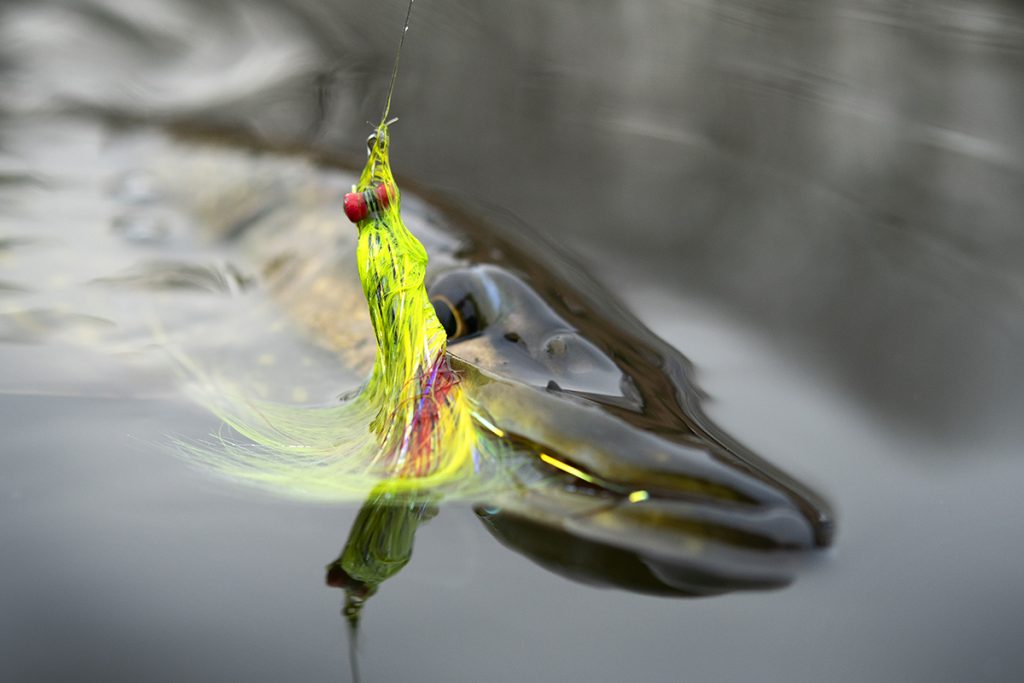
Winter has arrived in Scandinavia. We have snow in the northern Denmark and in Sweden. At Håkan’s there’s quite a bit. Snow and cold is a bit of a showstopper when it comes to fishing, but here in Scandinavia, not always. A drop in temperature in the salt usually sends the rest of the spawners up river – and the big, shiny sea trout are left. December is usually quite a good month. The temperature obviously drops in the lakes as well, but that’s not necessarily detrimental to fishing either. Pike spawn in the spring, so they have to keep themselves well fed during the winter and a drop in temperature often seems to get them eating.

As with all fishing, the temperature can get too low of course. Pike also slow down their metabolism drastically when the water gets really cold, but until then, even in dropping temperatures, there’s good fishing to be had. Periods with a stable temperature is often quite good. For a while yet, pike can stil be found in the shallows.
When pike are really on the hunt, they are usually feeding aggressively and are not particularly hard to catch. They may be hard to find, so you need to pay attention to where you find the first ones. Usually repeating retrieves at a certain depth can produce more fish (count down the line and fly). In those circumstances the fly doesn’t matter much – I tend to fishing some “in-between-fly”. Not too big, not too small, somewhat imitative and still with some colour.
Sometimes though, even on what you would expect to be a good day, they get tricky. Pike have clear feeding-windows and sometimes they just don’t seem to go on the hunt. That’s when it’s good to have a trick or two up your sleeve – and for one of them the fly does matter. Not the exact size and colours as much, but the materials and tying technique.
Years ago, Morten taught me “the hover”. Especially in slow periods pike will follow the fly, but not take it. Who knows – maybe they are in fact curious? So every now and then, stop your retrieve and “hover” the fly. Pausing like this is nothing new – in fact probably as old as fishing itself. But when hovering really becomes an active part of your fishing, a few hover-specific flies can be of great help. They are all about soft materials that will pulsate even when the fly is held static.
One such is Håkan’s Marabou Pike Fly. Marabou and pike with 700 razor-sharp teeth, I hear you say. Yes, maybe not the best combination, but nothing shivers and shimmers and pulsates like marabou, so it’s worth it. Take a look at the step-by-step pictures Håkan made and do try try a few.
One of Morten’s signature flies is the “Krapylet” – translates best as The Creature”, which he originally designed for perch fishing – with the same thoughts behind. Morten later adapted this fly and after plenty of variations over the variant it’s now called Silver Flash Tail Beast. Morten shows how to tie it here:
Håkan’s Marabou Pike Fly
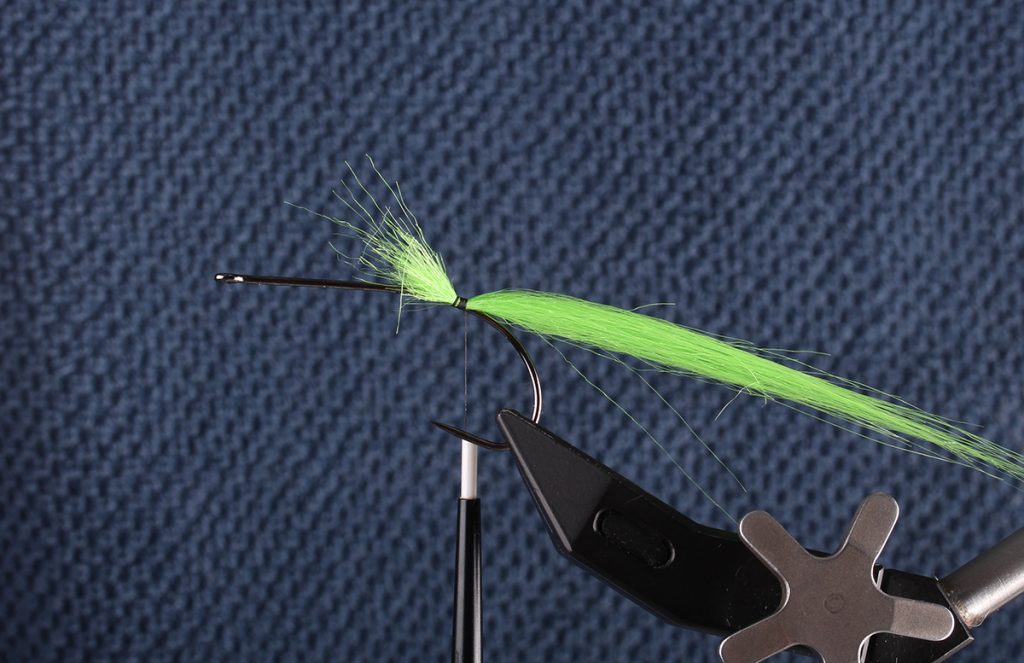

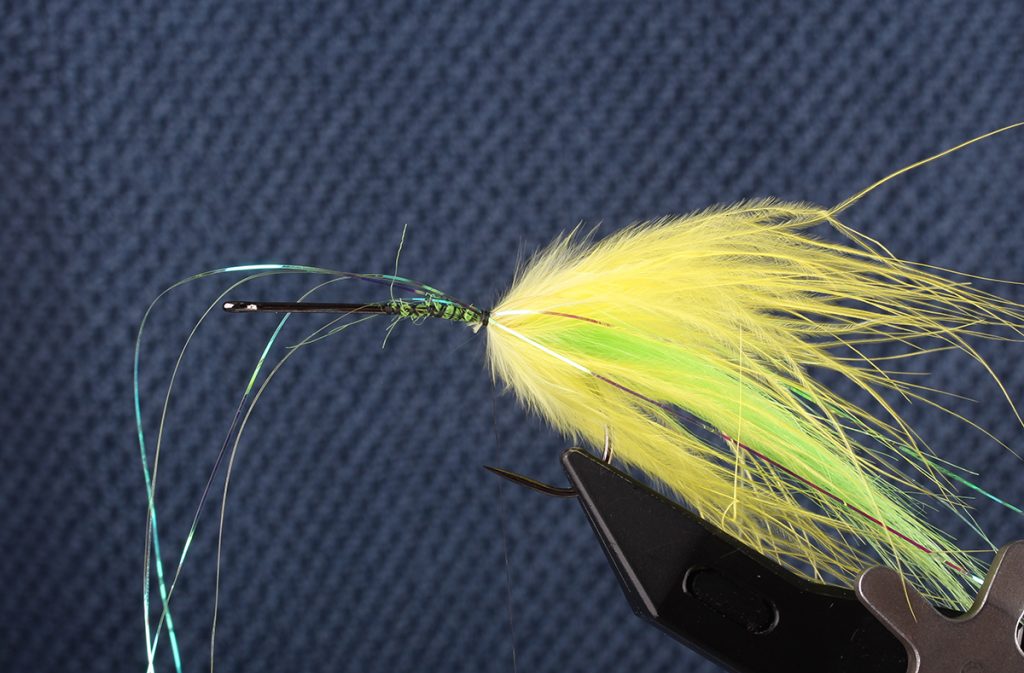

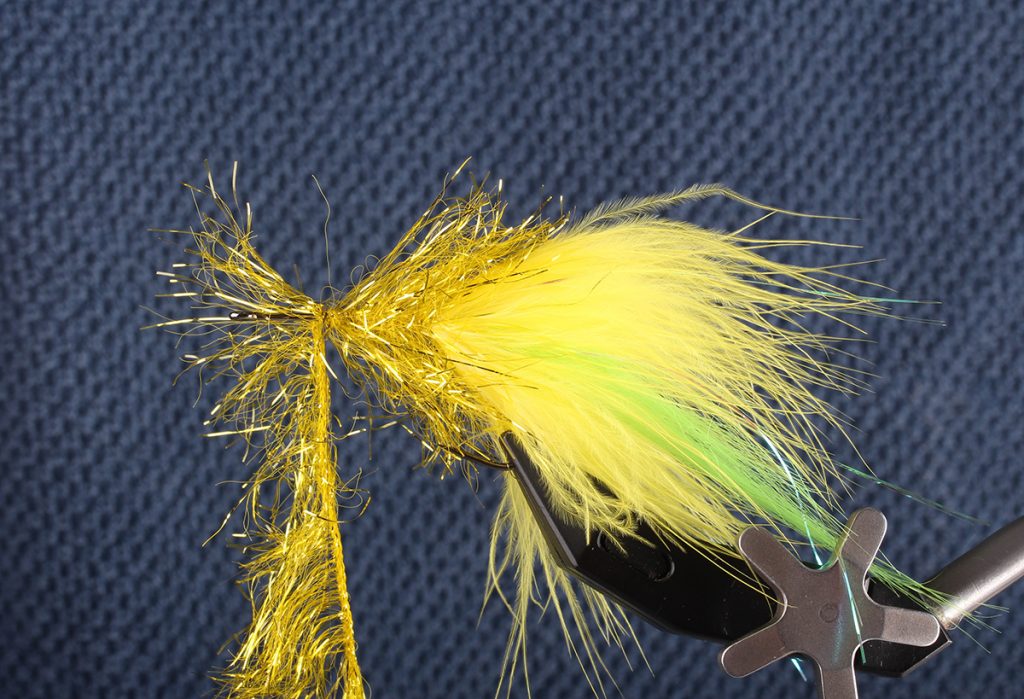
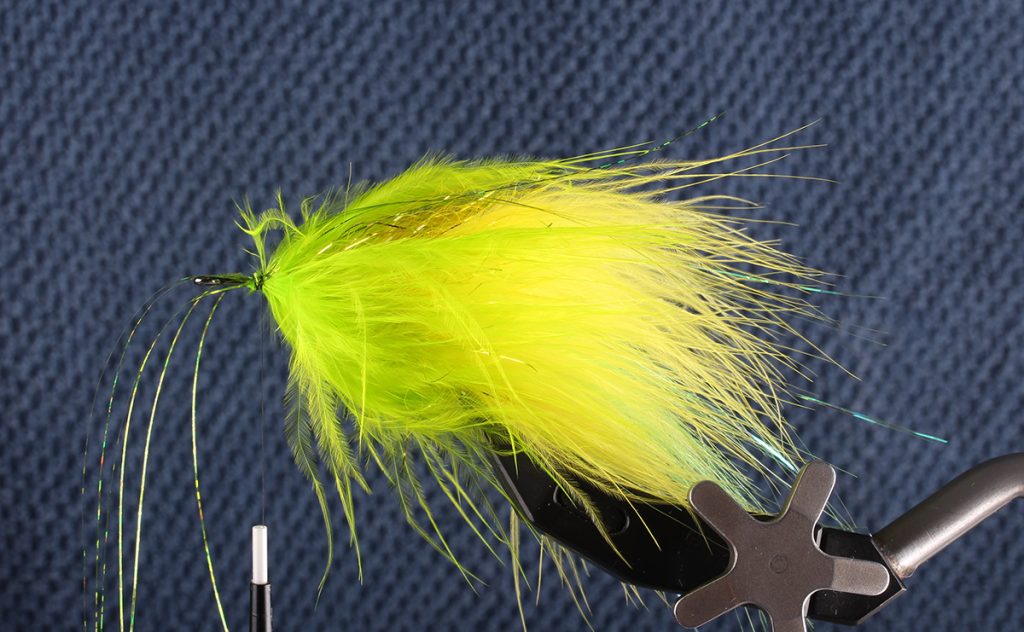
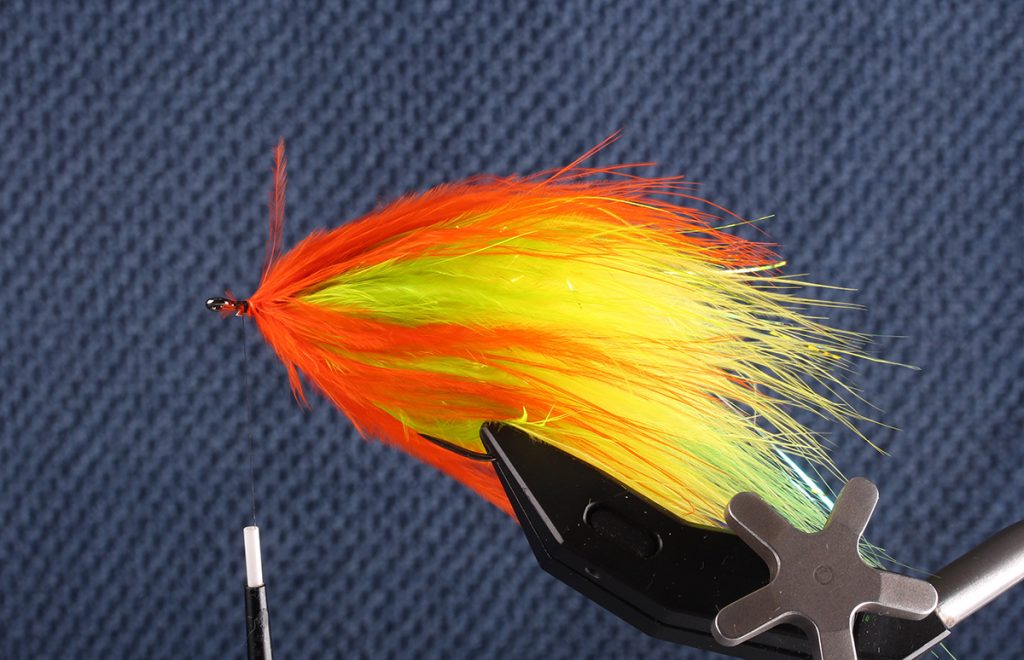
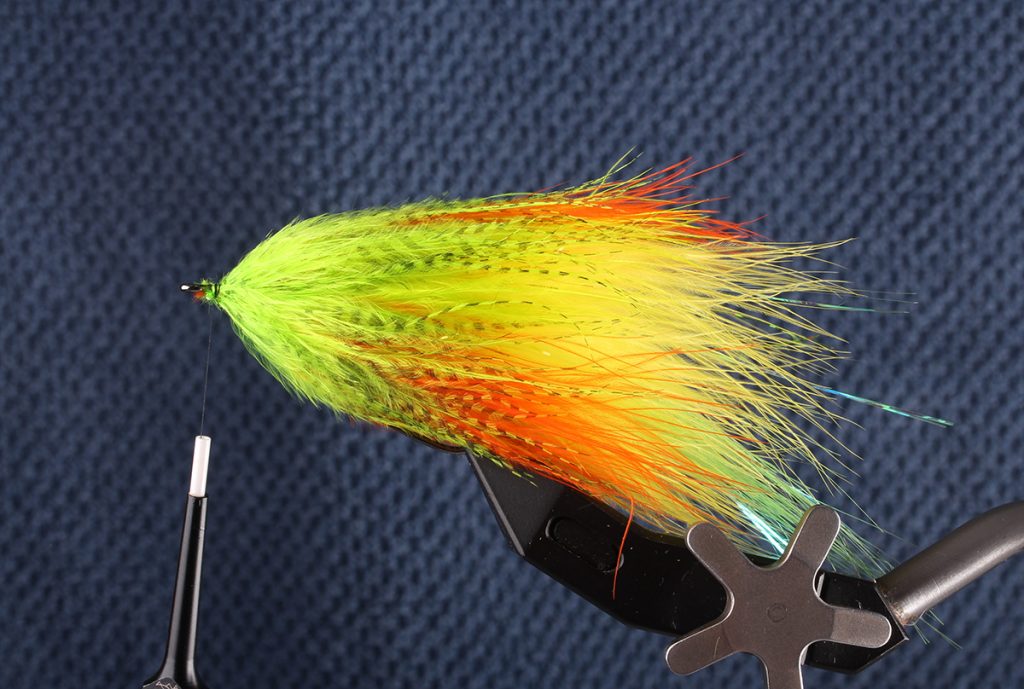
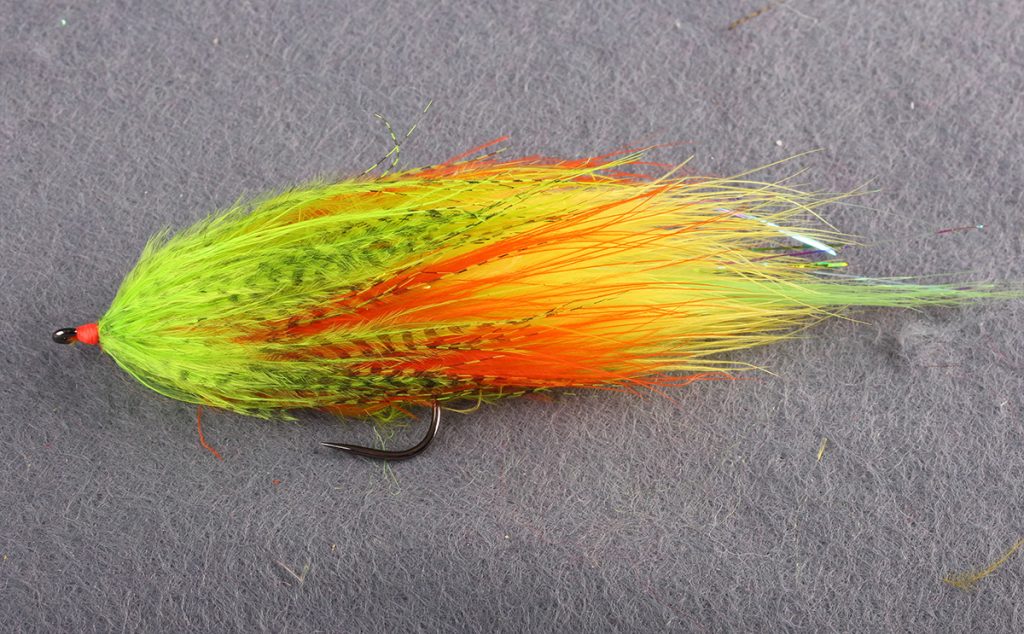
This fly is an obvious choice for endless colour variations and since it’s tied entirely of very soft materials, it’s an excellent hover-fly. If you add a little weight, it’ll sink and jig a little when paused and that’s also very effective. Fishing the hover works equally well on both floating lines and fast sinking lines and everything in between. And the right fly really does elevate the hover-game.
